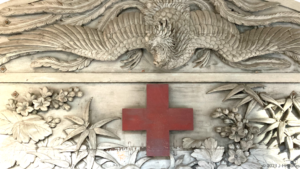Sakuradamon Gate of Edo Castle ruins with beautiful cherry blossoms: Ii Naosuke lost his life
The stunning sight of cherry blossoms in full bloom reflecting on the water of Chidorigafuchi moat of the former Edo Castle, now the Imperial Palace, is breathtaking. Its beauty leads to the Sakuradamon gate, where a startling event occurred under a cold sky with heavy snowfall in 1860 for the Tokugawa Shogunate. Ii Naosuke (1815-1860; 井伊直弼) from the Hikone domain, the highest rank retainer in the Tokugawa Shogunate, was assassinated by seventeen masterless samurai from the Mito domain and one samurai from the Satsuma domain, en route to enter Edo Castle. A single gunshot fatally struck Naosuke. The guardian retainers of the Hikone domain were unable to guard Naosuke because their swords were protected in cloth due to the snowy conditions, and they were killed as well. This incident made people aware of the fact that the Tokugawa shogunate’s power was not absolute and triggered the Meiji Restoration in 1868.
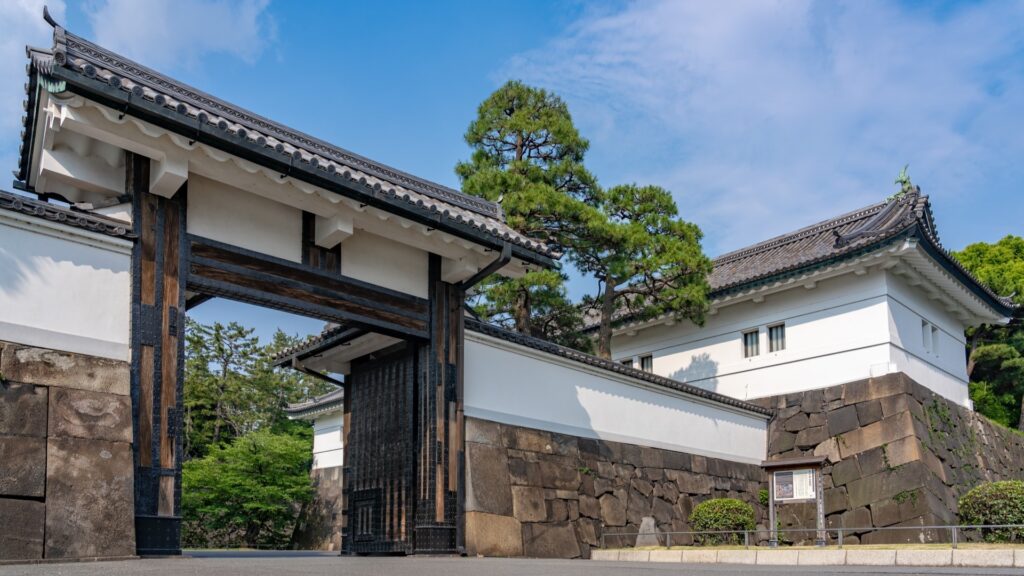
Two difficult challenges confront Naosuke
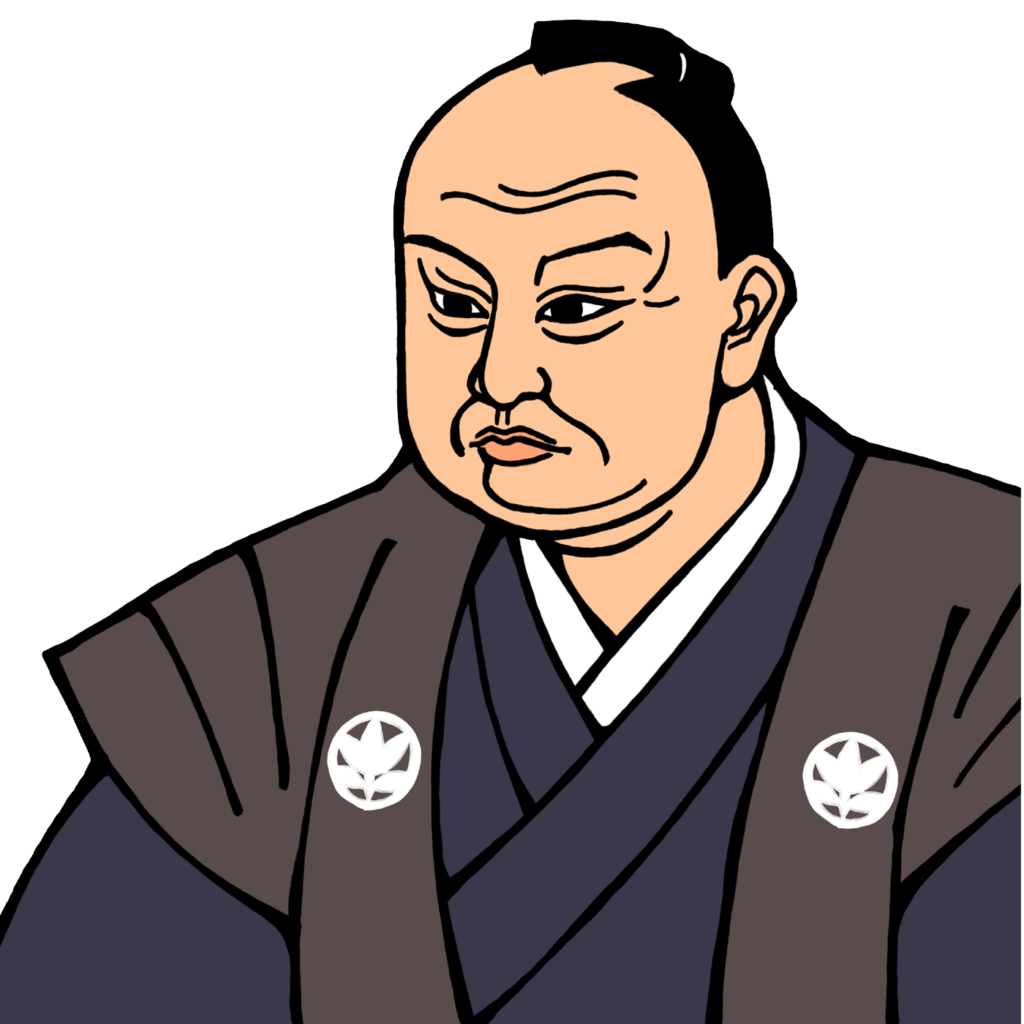
In 1858, Naosuke assumed the post of Tairo, the highest post in the Shogunate following the shogun, of the Tokugawa Shogunate amid domestic and foreign challenges. He had to navigate difficult situations including the U.S. and other Western nations seeking trade with Japan, which Emperor Komei and the court nobles did not accept. In addition, he faced the next 14th Shogun successor strife between two candidates, Tokugawa Yoshitomi (1846-1866; 徳川慶福), promoted by the Kishu domain, and Hitotsubashi Yoshinobu, later known as Tokugawa Yoshinobu, (1837-1913, 徳川慶喜), promoted by the Mito and the Satsuma domain, which had been increasing its influence in political. This was also a struggle for political leadership in each domain. Thus, the shogunate fell into a chaotic political situation.
Emperor Komei does not give Imperial sanction for the Treaty
Two years before Naosuke’s assuming Tairo, in 1856, the first United States Consul General in Japan, Townsend Harris, arrived at Shimoda, situated at the southern tip of the Izu Peninsula. His primary objective was to conclude the Treaty of Amity and Commerce between the United States and Japan. Under the Tokugawa shogunate, Roju (a member of the shogun’s council of elders), Hotta Masayoshi, alongside two superior bureaucrats, Iwase Tadanari and Inoue Kiyonao, proceeded tough diplomat negotiations with Harris in pursuit of benefits for Japan. After hard bargains, an agreement of terms and conditions was finally reached on January 24th, 1857. This agreement outlined various terms and conditions, including a ban on opium importation, aimed at avoiding a similar situation to the Opium War in the Qing Dynasty and potential invasions from the U.K. and certain Western nations. Hotta made his way to Kyoto seeking Imperial sanction to close the treaty. However, Emperor Komei (1831-1867, 孝明天皇) did not grant it. Instead, Emperor Komei issued an imperial order, to "discuss the matter with the various lords and report the outcome again."

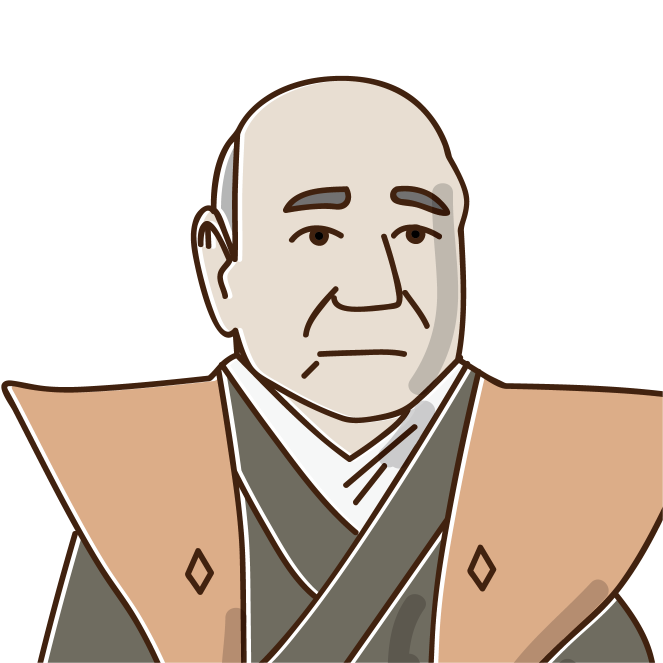

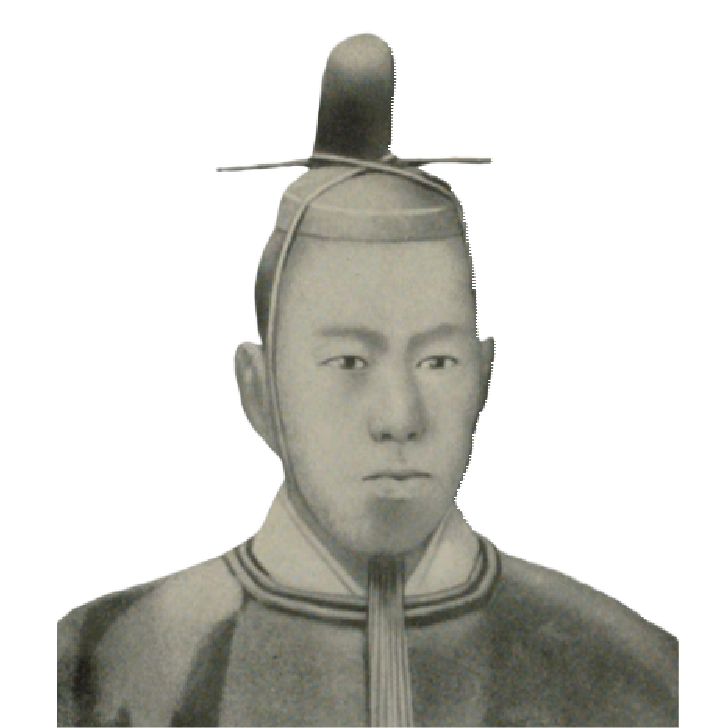
Naosuke tried to steer opening the country with the unanimous consent of both the Emperor and the shogunate

Upon assuming the post of Tairo, Naosuke acted swiftly to overcome Hotta's blunder in failing to obtain the imperial sanction for the conclusion of the treaty. First, he immediately convened a meeting with the 13th shogun, Tokugawa Iesada (1824-1858, 徳川家定), discussed the successor as shogun, and resolved the succession issue by having Iesada declare Tokugawa Yoshitomi as his successor. Concerning the treaty with the U.S., Naosuke summoned feudal lords to Edo Castle, based on Emperor Komei’s directive, to gather their perspectives. Simultaneously, he made Harris promise a three-month delay in signing the treaty. He aimed to dispatch an envoy to the Imperial Court for renewed Imperial sanction during this period. Just as everything was going smoothly, an unexpected event unfolded, Harris moved his steamboat to Edo Bay, pressing for an immediate treaty signing. His urgency stemmed from the conclusion of the Arrow War in China and the imminent arrival of victorious British and French warships in Japan. A cabinet meeting was swiftly held. Naosuke advocated for refraining from signing the treaty until securing the imperial sanction, while several cabinet members argued fiercely that the signing of the treaty was more critical than the imperial sanction to prevent war. Ultimately, a decision was reached to postpone the treaty's signing, dispatching Iwase and Inoue for the negotiations.
Signing the treaty without waiting for imperial sanction
Without negotiating with Harris or obtaining Imperial sanction, however, they signed the treaty. Before the negotiations with Harris, Inoue asked, "If the negotiations do not go well, may we sign the treaty?" Naosuke replied, "In that case, we have no choice but to try to postpone the conclusion of the treaty as long as possible.” For Naosuke, it was an unwilling signing of the treaty. In his diary that day, Naosuke criticized, saying, "I'm so disappointed that it was signed so quickly".
The Ansei Purge began
In response to Emperor Komei's anger over the treaty’s signing without imperial sanction, the Mito and Satsuma domains took this as an opportunity and engaged the nobility, successfully sending the letter of Emperor Komei directly to the Mito domain without going through the shogunate. This letter criticized the shogunate for concluding treaties without imperial sanction and ordered the shogunate to readdress matters with the three Tokugawa families. This was a major issue for the shogunate that could not be overlooked because it could have shaken the very foundation of the nation's governance, which rested with the Tokugawa Shogunate, authorized by the emperor to govern. Therefore, the Shogunate initiated an investigation and uncovered a confidential letter stating that the Satsuma, Choshu, and Tosa domains’ contingency plan to raise an army in case of crisis was a statement of Satsuma samurai, Saigo Takamori. In addition, the shogunate got a confession from the Choshu samurai, Yoshida Shoin, to launch an assassination on Roju of the shogunate. It was like a military coup. The shogunate, spearheaded by Naosuke, responded harshly and purged many bureaucrats, retainers, federal lords, and court nobles, over 100 influential people in total.
- The heads of the Mito Tokugawa family, Owari Tokugawa family, and Fukui domain - House Arrest
- Iwase Tadanari, a bureaucrat who engaged in fierce negotiations with Harris - Confined and Died of illness
- Yoshida Shoin and Hashimoto Sanai, a retainer of the Fukui domain- Death Penalty.
It was the Ansei-Purge, that decreased the control power of the Shogunate due to many retainers’ deaths. Instead, it increased the chaotic situation of radical masterless samurai in Japan, especially in Kyoto.
Naosuke lost his life at Sakuradamon Gate
Meanwhile, Emperor Komei of any misunderstanding was cleared by the Shogunate’s explanation aiming to conclude the treaty under Imperial sanction. Consequently, the imperial decree issued to the Mito domain was ordered to be returned to the Imperial Court. However, several samurai of the Mito domain outraged by this, broke away from the domain, went to Edo, and assassinated Ii Naosuke. This was the Sakuradamon incident as stated at the front.

@ 大蘇芳年,月岡米次郎『安政五戊午年三月三日於テ桜田御門外ニ水府脱士之輩会盟シテ雪中ニ大老彦根侯ヲ襲撃之図』,熊谷庄七. 国立国会図書館デジタルコレクション
Naosuke's faithful loyalty to the Tokugawa Shogunate and his vision for Japan's future
Naosuke was born as the 14th son of the feudal lord of the Hikone Domain and spent his time in the humble house outside of Hikone Castle, known as Umoregi-no-ya, until the age of 32 and devoted himself to national learning, Waka (Japanese poetry), tea ceremony, martial arts, and so on, and trained himself both physically and mentally. As a result, he already had the qualities to become a great lord by the time when he became a feudal lord and then a Tairo. The successive feudal lords of the Hikone domain had remained loyal to the Tokugawa Shogunate since the first lord, Ii Naomasa, served for Tokugawa Ieyasu. Likewise, Naosuke attempted to lead the 250-year-long isolationist regime of the Tokugawa shogunate to open the country with the Imperial sanction of Emperor Komei as a united nation. Naosuke's wise decision could be made because he had inherited the weight of the loyalty to the Shogunate from his previous successive lords. On the other hand, many of those who were purged by Naosuke was indispensable human resources for the Meiji era, the new modern nation. Notably, the "Five Articles of Oath" adopted by the Meiji government embodied the fundamental principle of "nurture the individual spirit and devote oneself to learning," initially advocated by Hashimoto Sanai, who died in a penalty, at the age of 25. The Ansei Purge was so harsh that it resulted in the loss of outstanding human resources.
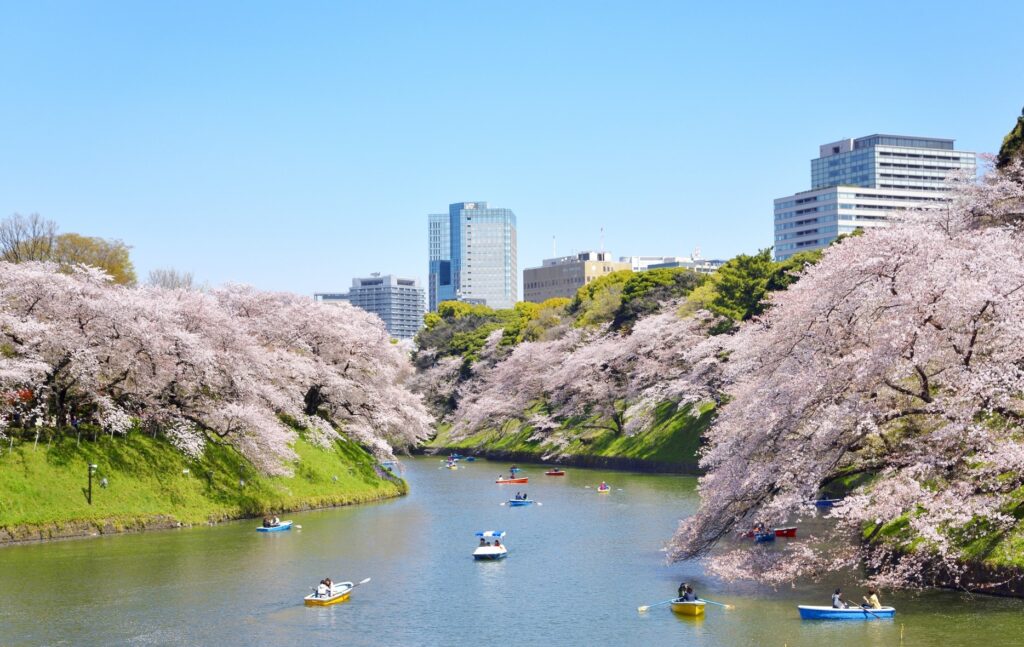
Ii Naosuke is a man whose reputation is still widely divided today. For the Meiji government, established by the restoration of Imperial rule, Naosuke's reputation as a "vassal who disobeyed the emperor's imperial order" has been widely spread and still endures. On the other hand, it is a fact that some people appreciate Naosuke's achievements as a "benefactor of opening the country to the outside world." Please stop by Sakuradamon gate when you visit the Imperial Palace thinking of the historical turning point of the end of the Edo period when Ii Naosuke acted in his mission to be loyal to the shogunate and to be the global nation. Especially, Spring with cherry blossoms in full bloom is spectacular scenery.
Interviewed Hiroko Noda (Part-Time Lecturer at Ritsumeikan University)
Ii Naosuke Timeline
| 1575 | Ii Naomasa started to serve Tokugawa Ieyasu | - | |
| 1603 | Tokugawa Ieyasu established Tokugawa Shogunate at Edo | - | Edo |
| 1604 | Started the construction of Hikone Castle | - | |
| 1815 | Ii Naosuke was born at Hikone Castle | Age=1 | |
| 1831 | Ii Naosuke moved to Umoregi-no-ya residence outside of Hikone Castle | 17 | |
| 1850 | Ii Naosuke assumed the lord of Hikone Domain | 36 | |
| 1853 | Commodore Perry of the US entered port at Uraga at the entrance to Edo Bay | 39 | |
| 1858/04/23 | Ii Naosuke took up the post of Tairo or a chief master | 44 | |
| 06/19 | The Treaty of Amity and Commerce between the United States and Japan was concluded without an imperial sanction in 1858 | 44 | |
| 06/23 | Three major federal lords entered Edo castle without the permission in advance | 44 | |
| 06/25 | Iesada declared Tokugawa Yoshitomi as the 14th Shogun | 44 | |
| 07/06 | The 13th Shogun passed away | 44 | |
| 07/08 | The Emperor Komei’s letter sent to Mito domain | 44 | |
| 1858/09~ | Ansei Purge started to crackdown on over 100 people including Yohinobu's father | 44-45 | |
| 1860/03/03 | Ii Naosuke was assassinated in front of Sakuradamon gate | 46 | |
| 1868/4/11 | Edo castle surrendered without bloodshed to Imperial Army | - | |
| 1868/10/23 | The Meiji Restoration | - | Meiji |
Recommendations to visit
Sakuradamon Gate
- Access: A 10-minute walk from Nijubashi station or Otemachi station. → for more information
Shimoda History Museum
- Access: 10-minute walk from Izukyu-Shimoda station of Izukyu Line.

